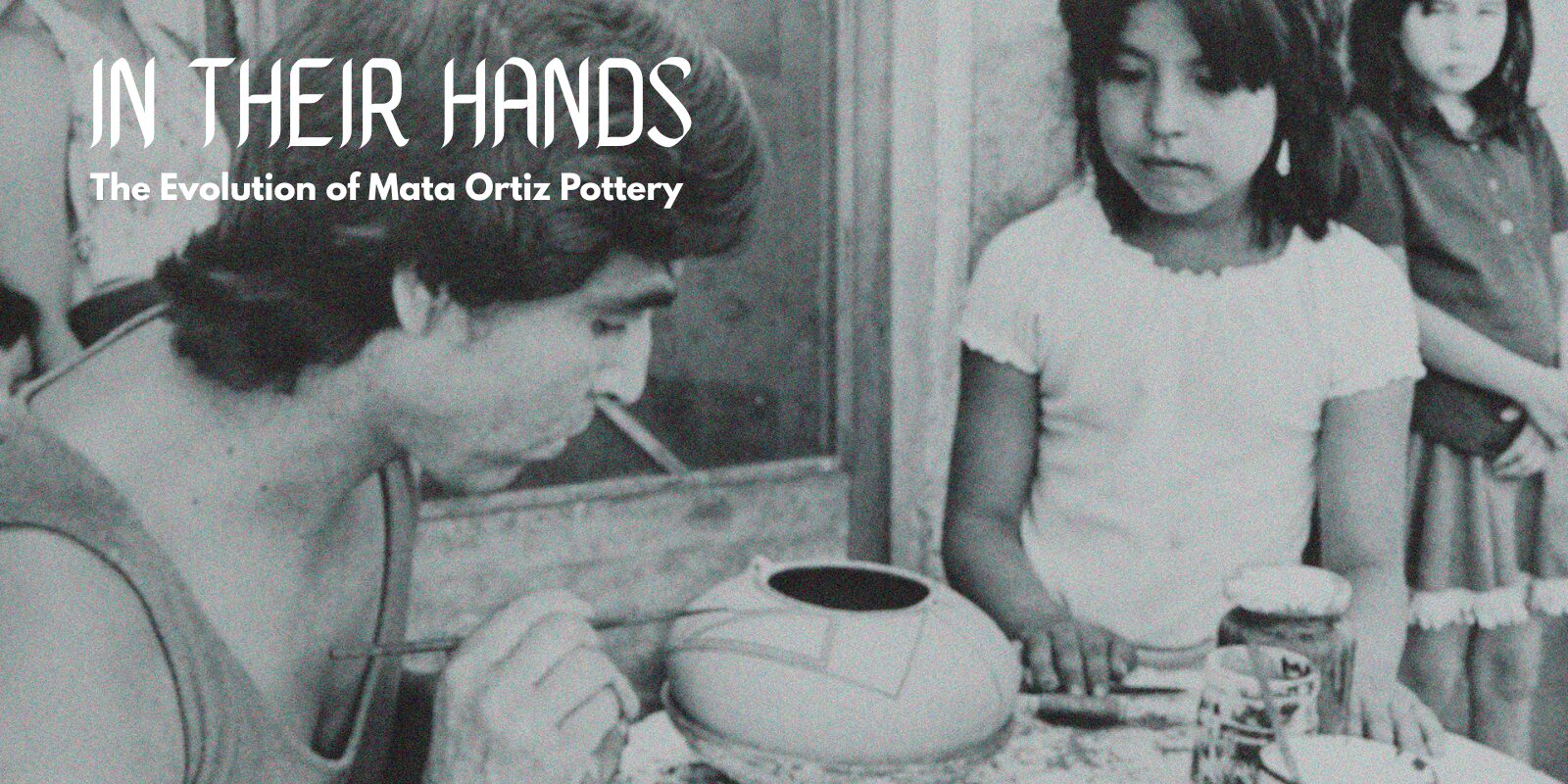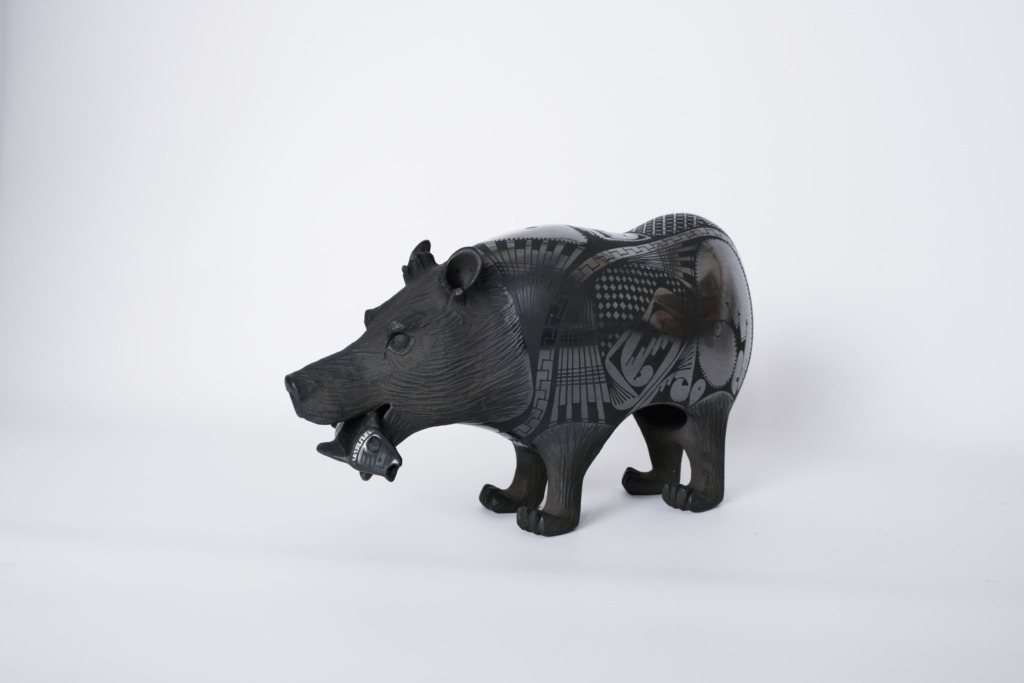
| On View: | July 19–December 21, 2025 |
| Mini Poster: | Available at AMOCA, or click for printable .pdf |
In Their Hands – Exhibition Overview
From ancient shards scattered across the desert floor to masterful contemporary vessels, In Their Hands: The Evolution of Mata Ortiz Pottery traces the remarkable development of Mata Ortiz pottery—a living tradition born from both necessity and artistry. This exhibition explores how a small village in northern Mexico transformed archaeological fragments into a thriving ceramic movement that bridges ancient Mogollon techniques with contemporary forms and designs.
The pottery you see here represents more than artistic achievement; it embodies cultural resilience, economic survival, and the power of community knowledge. Each piece tells the story of Mata Ortiz, where potters have reimagined thousand-year-old vessels while developing their distinctive visual language. These works stand at the crossroads of heritage and creativity, demonstrating how tradition evolves when filtered through new hands.
In Their Hands will be on view in the Igal & Diane Silber Vault Gallery at AMOCA from July 19–December 21, 2025.
The Story of Mata Ortiz
In the high desert of Chihuahua, Mexico, the village of Mata Ortiz sits near Casas Grandes—an ancient archaeological site left by the Mogollon people, who vanished centuries before Spanish colonization. For generations, pottery shards littered the landscape around these ruins, remnants of a sophisticated ceramic tradition seemingly lost to time.
During the 1970s, as drought and economic decline threatened Mata Ortiz’s survival, villager Juan Quezada began experimenting with clay and fire. Inspired by the ancient fragments surrounding his home, he embarked on a painstaking process of reverse-engineering forgotten techniques through trial and error. What began as curiosity evolved into mastery as Quezada developed methods that honored ancient forms while expressing his artistic vision.
Recognizing pottery’s potential to sustain his community, Quezada shared his knowledge with family members, then neighbors, and eventually throughout the village. This generous act of teaching transformed individual experimentation into a collective enterprise. Mata Ortiz pottery became not just an art form, but an economic lifeline that helped rescue the village from poverty.
While Juan Quezada is widely celebrated as the father of modern Mata Ortiz pottery, the movement’s origins reflect the complexity of cultural revival. Some accounts describe a group of five men simultaneously developing pottery techniques, each contributing to what became the “Mata Ortiz style.” Others point to Manuel Olivas as an earlier pioneer or recognize that local women had maintained pottery-making knowledge across generations, passing down techniques that informed the revival.
These varied narratives underscore an important truth: cultural renaissance rarely emerges from a single source. The Mata Ortiz movement succeeded because it drew from multiple streams of knowledge, experience, and creativity within the community.
Today, Mata Ortiz pottery continues to evolve under the hands of accomplished artists such as Diego Valles, the village’s most celebrated contemporary potter. His work pushes beyond historical reproduction, incorporating new forms, scales, and decorative approaches while maintaining the technical excellence and spiritual connection that define this tradition.
The works in this exhibition demonstrate how living traditions adapt and flourish. They are neither ancient nor purely modern, but something more dynamic—vessels that carry forward the accumulated wisdom of generations while speaking to contemporary aesthetic sensibilities. In their hands, clay becomes a bridge across time, connecting past and present in forms that honor both heritage and innovation.
Selected Images



Exhibition Acknowledgments
This exhibition is funded, in part, by a grant from the Dew Foundation.
Bring Some Culture to Your Inbox
399 N Garey Ave Pomona, CA 91767
909.865.3146 | info@amoca.org
The museum is open Fridays, Saturdays, and Sundays, 11 AM–4 PM. Plan your visit by clicking here.
For information about Ceramics Studio hours and availability, please click here for the Ceramics Studio.
